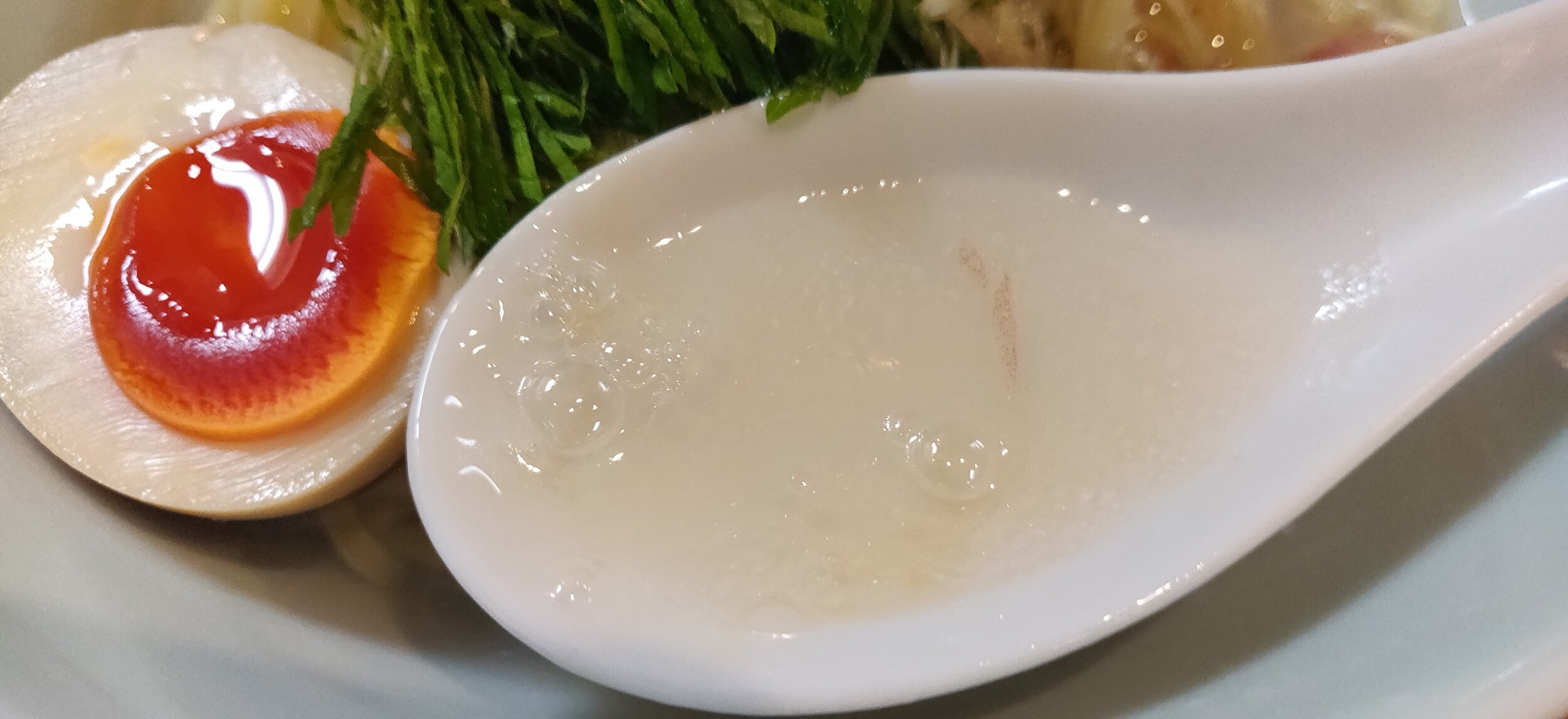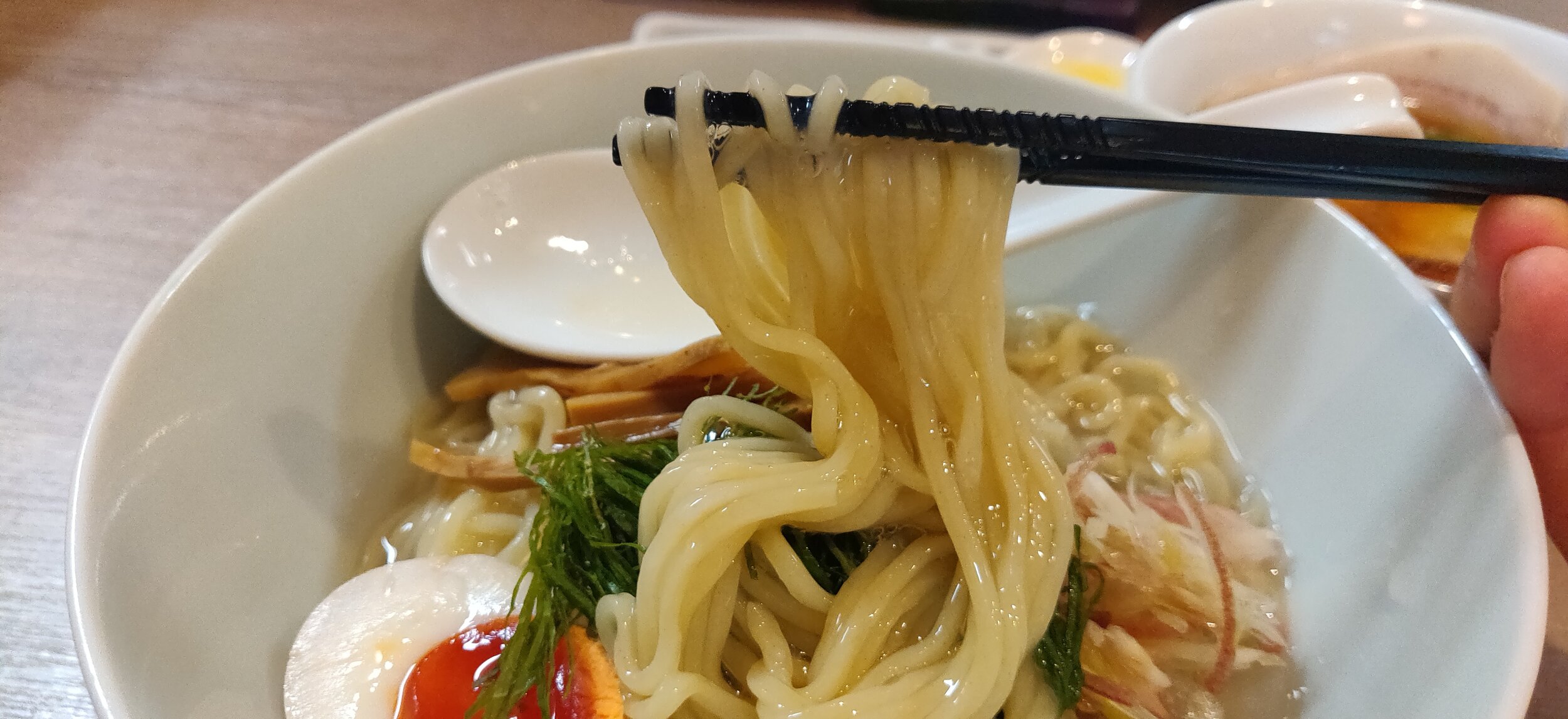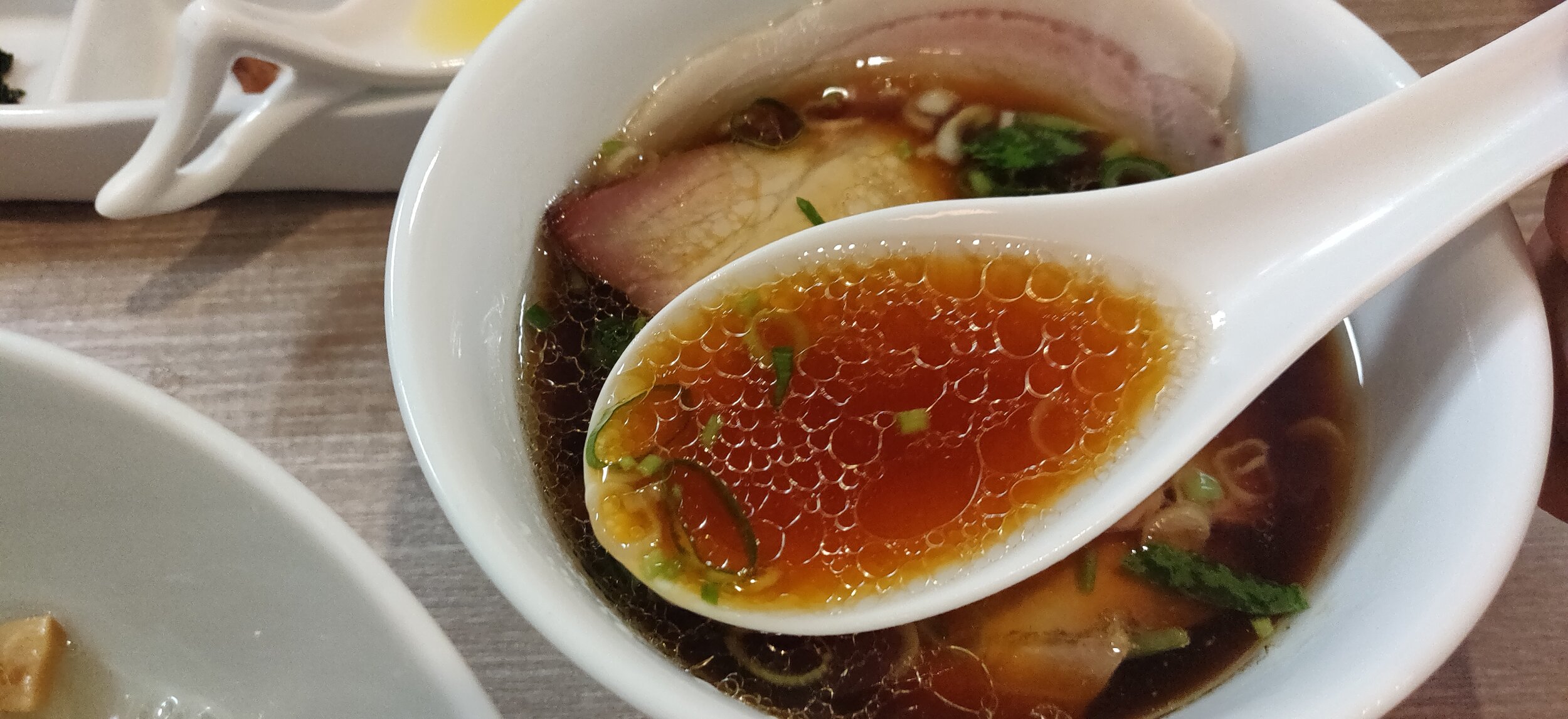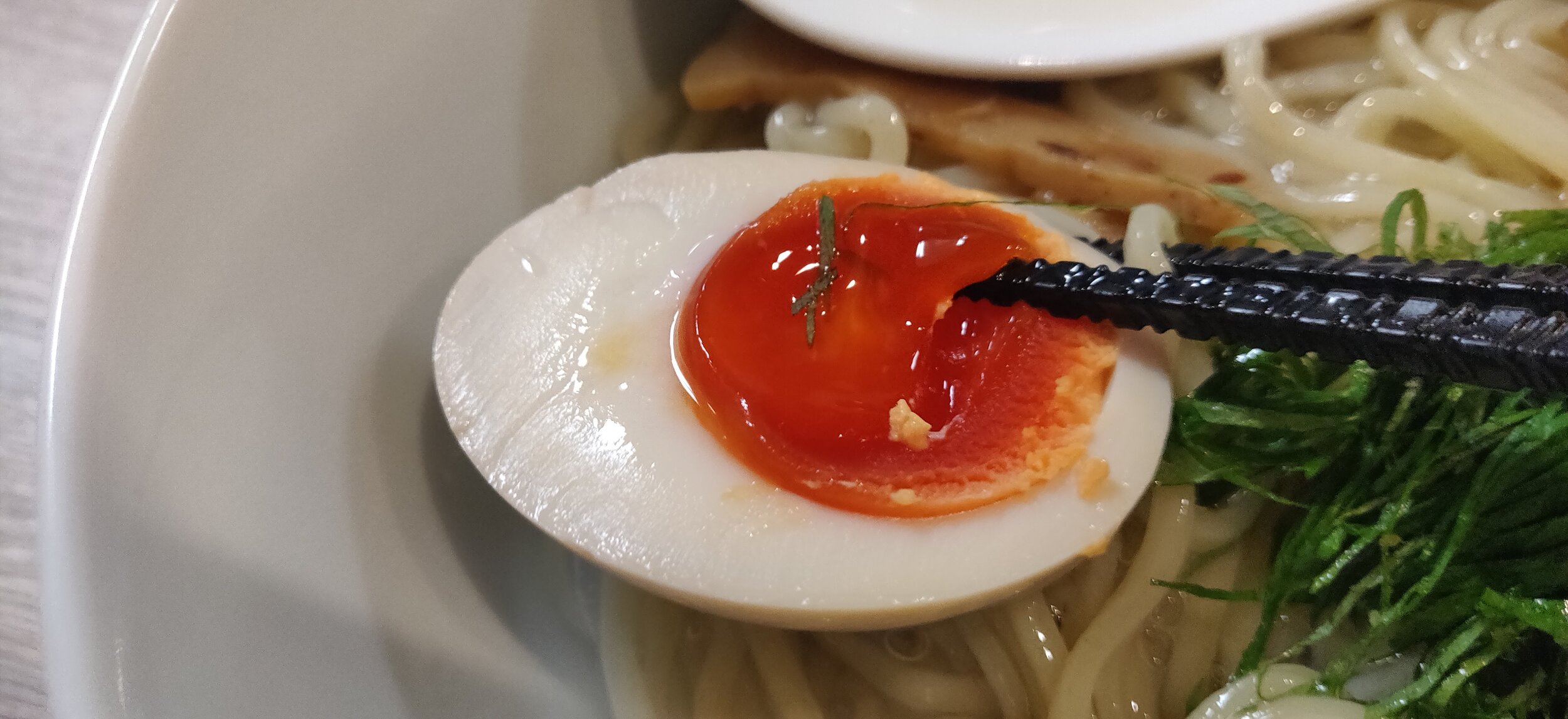Chuka Soba Waka Tokyo (中華そば 和渦 TOKYO); Best All Around Ramen of Shinagawa, Kitashinagawa, Tokyo
To be completely honest, I’ve actually already been here, but two reasons for my lack of review. 1, my previous visit was at the old location and I wanted to make my review for this new spot since this is technically the one that made in on to the Tabelog Top 100 Hyakumeiten list and 2, my photos from that first time sucked because I was using a terrible Sony Xperia phone with the worst camera ever. After months of holding it off, I finally made my way to their new location to snap some photos, but of course I forget the menu shots so I’ll have to come back again so I can translate it for you guys, sorry! Anyways, without further ado, here is my review!
When making your way to Chuka Soba Waka Tokyo, head to either Shinagawa or Kita-Shinagawa stations, which are both walking distance from the shop. You’ll undoubtedly save a bit of time if you come through the latter, Kita-Shinagawa station, but it is on a rather peculiar trainline so if you grabbed the JR pass or just can’t be bothered to make a bunch of transfers, just boot up Google maps and have a stroll from Shinagawa. Shop is open for lunch on Monday-Saturday while dinner service is only available on weekdays. They take a day off on Sundays as well as an occasional holiday here and there so be sure to check their Twitter for their latest shop schedule. Lunch hours are 11:00-14:30 and for dinner they are open from 18:00 to around 21:00. They do tend to attract a fair number of customers so be prepared for a possible wait. For the menu they serve a Shoyu, Shio, a daily special, and a Tsukemen which is what I ended up ordering. They also have a wide range of donburi, rice bowl options that I would check up online before visiting…there’s a ton of them.
Pictured is my ordered Tsukemen which comes with a really opaque Shijimi Kombu-sui for the noodles. If you haven’t read any of my previous reviews of shops with Kombu-sui, it’s essentially a broth taken from dried Kombu and because of the composition of the dried kelp, it makes the resulting broth a bit slimy and viscous. What makes the one served at Waka Tokyo so different is that they also use Shijimi Japanese clams in their Kombu-sui which adds even more flavor to the viscous concoction. Some people love the Kombu-sui, others can’t handle the texture, so do be weary of that when ordering. I personally enjoy it quite a bit, but I wouldn’t say it’s the best thing since sliced bread. It does add a ton of complexities and flavor to the dish making it a rather unique experience, but don’t feel pressured to order it as they do offer some phenomenal shoyu and shio ramen as well. Anyways, topping the noodles is a bit of Japanese herbs, myouga which I can only describe as sort of a Japanese ginger, menma bamboo shoots, and the ajitama, soft boiled egg. The accompanying soup is a shoyu base and the pork chashu lies beneath it with some negi green onions sprinkled over the top.
I guess I should start with the Shijimi Kombu-sui, which is probably the most intriguing part of the dish. Of all the Kombu-sui Tsukemen I’ve had in my life, this was the least viscous so if you’re looking to try this at least once on your trip, Waka Tokyo might be the place to test your palette. Despite it lacking some of the sliminess of the other shops, the Kombu flavor and aroma did permeate over to the noodles nicely. However, the real kicker is the Shijimi clams which provided an umami enriched, sweet kick unlike any Kombu-sui I’ve ever had. The combination of the two gave it the distinct flavors of the sea…in a good way, and gave the noodles a lot of character which it wouldn’t have had if on it’s own. I think the best part of the Kombu-sui, apart from imparting additional levels of flavor to the noodles, is that it forces me to try each strand individually, allowing me to experience the different aromas and flavors it releases with each bite. Each strand permeated some fair amount of flour aroma while the Kombu-sui gave it a fantastic slipperiness for a truly satisfying slurp. The accompanied accoutrements gave it some subtle flavor kicks making it hard not to resist eating by itself. After a few slurps of my noodles though I finally got around to dipping them in the soup and the pairing was truly spectacular.
What honestly struck me most about the dipping soup at Waka Tokyo was how impactful the broth was despite it looking like the shoyu tare would hit me like a bag of bricks. The soup is a bit like the New Wave Tokyo Chicken Shoyu ramen that’s been trending the past few years in that the broth is steeped using just chicken and water while the tare incorporates a variety of shoyu to mix and match for a perfect pairing. Typically the shoyu tare does a lot of the heavy lifting with it giving the light chicken broth salinity and a flavor profile to uplift the light base, but Waka Tokyo flips it and gives the chicken flavor more impact by using a healthy, generous serving of Chiyu chicken oil to coat your lips with every slurp. The Chiyu readies your taste buds by providing the initial flavor punch, but is quickly followed by the deep, soothing chicken broth that warms your soul as it traverses down through your body. Don’t get me wrong, the shoyu tare slaps hard, but I really appreciated having that simple chicken flavor shine as the star attraction. The benefit of the added chicken oil is that it clings to the noodles quite nicely as well so despite the strands having a layer of Konbu-sui on the surface, it sort of meshes together and emulsifies while slurping for a perfectly seasoned slurp, every time.
As for the toppings, if I’m being frank, I wasn’t the biggest fan. The pork chashu cooked a bit too much as it sat in the residual heat of my dipping soup, as did the won ton wrapper which was disintegrating in to my soup by the time I tried to take my first bite. I feel like it would have been better served on a separate platter, but it did ensure that those protein toppings were properly seasoned in the soup. My favorite was the ajitama soft boiled egg which was cooked to a beautiful orange yolk finish as well as the crunchy menma bamboo shoots which gave some much needed texture contrast to the meal.
Finally, when I finished with my noodles and toppings, I dumped the rest of the Kombu-sui in to the dipping soup in order to intensify the umami of the soup, but also to make it more palatable to drink on it’s own. Honestly, this was the perfect finish to my meal and it truly encapsulated what every aspect of the dish was trying to achieve. Now I wouldn’t say this was the best bowl of tanrei, light tsukemen I’ve ever had, but the amount of time and dedication put in to it in order to balance this complex dish can’t be overlooked and it was definitely one that made me appreciate each component individually. It is quite tedious to get to from central Tokyo, but I definitely recommend a visit if you’re interested in trying tsukemen like this.








